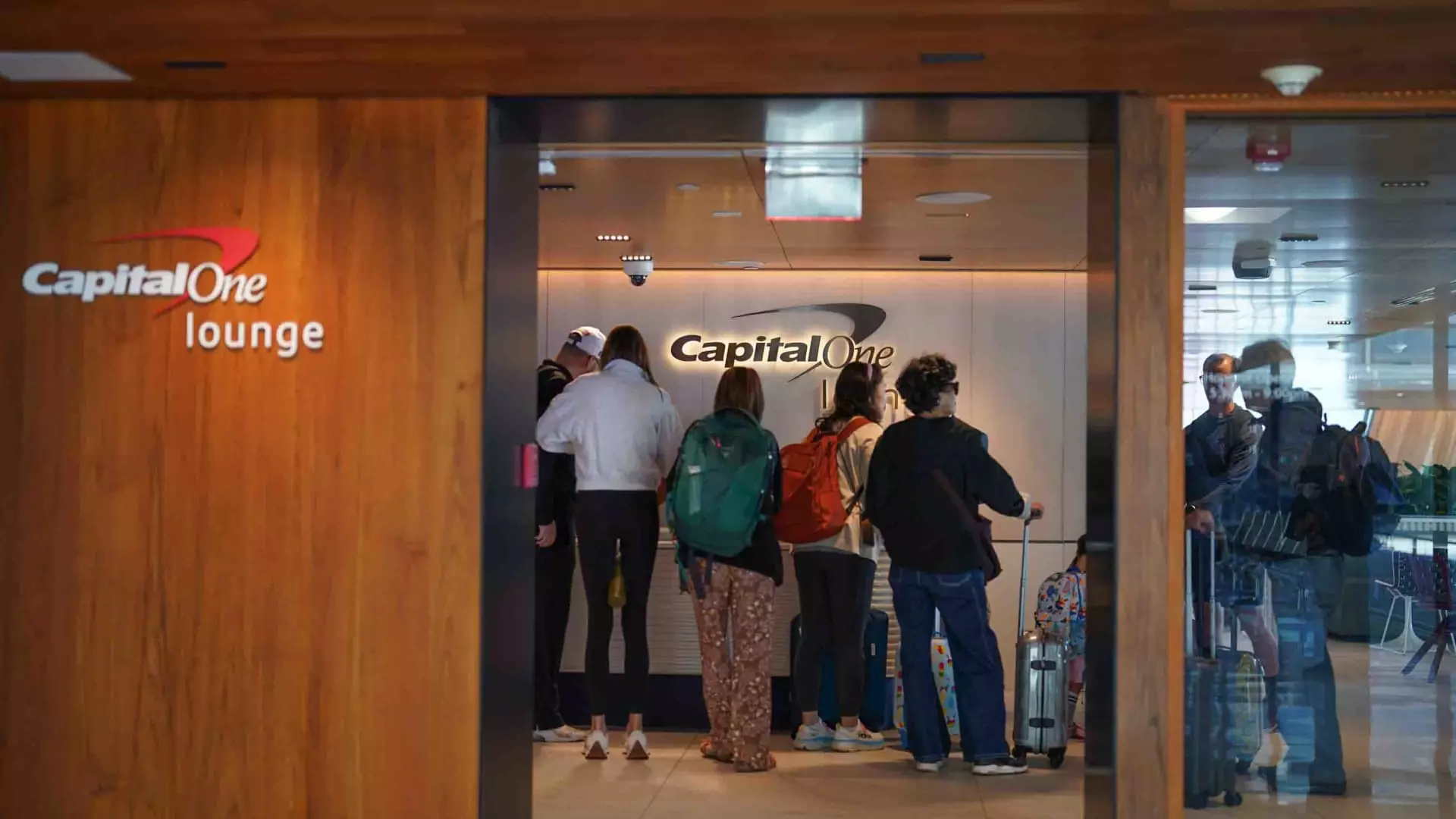The rise in popularity of airport lounges has revolutionized the travel experience, embodying luxury and comfort amidst the often chaotic airport environment. However, as demand for these sanctuaries swells, so too does the cost of entry. Recent shifts in policies, particularly by Capital One, signal a significant change in how travelers will engage with lounge access. With this new approach, the era of freely sharing lounge privileges with family and friends appears to be drawing to a close, replaced by fees that fundamentally alter the landscape of airport lounge access.
Capital One’s Controversial Changes
Starting February 1, Capital One will impose stringent measures on its Venture X and Venture X Business cardholders, eliminating automatic access for guests and requiring substantial fees for additional entries. The necessity to pay $125 annually for a second cardholder or $45 for each adult guest makes it apparent that the exclusivity of these lounges will now come with a hefty price tag. With air travel becoming increasingly accessible yet simultaneously more costly at certain touchpoints, one might argue this shift is contradictory – cheaper tickets paired with pricier lounge access creates a frustrating paradox for families looking for a seamless travel experience.
Capital One justifies these changes as a means to enhance the lounge experience while controlling overcrowding. Their statement insists on maintaining a dignified atmosphere for high-spending patrons; however, one cannot help but sense an underlying prioritization of profit over customer service. Are lounge experiences destined to cater only to the affluent? The hefty $75,000 spending requirement for complimentary guest access further aligns the elite nature of lounge privileges with financial exclusivity.
Market Trends and Competitive Landscapes
The transformation of lounge policies is reflective of broader market dynamics that influence credit card companies. As Capital One positions itself as a challenger brand, it faces the formidable influence of industry leaders like American Express. Their similar $75,000 annual spending threshold for guest access denotes a troubling trend: exclusive perks are increasingly tethered to financial status rather than loyalty or reward accumulation. For the average traveler, this may prompt concerns about accessing services they previously enjoyed based purely on card ownership.
While reimbursement strategies can be effective, they may ultimately alienate a significant portion of travel reward cardholders. Competition will rely on innovation and offering unique experiences rather than merely tightening the reins on existing benefits. With accelerated expansions of lounge networks, how can companies redefine their offerings to ensure every traveler feels included, regardless of their spending ability?
The Broader Impact of These Policy Changes
As Capital One and other credit card issuers revise access policies, the ramifications could ripple through the travel industry. Airlines, already grappling with the challenge of managing overcrowded lounges, have shown a responsive evolution in their systems, seeking balance between profitability and customer satisfaction. The changes by Delta Air Lines, American Airlines, and United Airlines to limit access and develop premium spaces will likely signal further adaptations in lounge ecosystems across the board.
At the same time, increased prices for lounge access risk disappointing a segment of travelers who benefited from comfort while waiting for flights. The allure of exclusive services becomes less appealing when the financial barrier feels insurmountable. Their potential to transform experiences into privileges solely reserved for those with deep pockets diminishes the inclusive spirit of air travel that once defined the very nature of adventure.
As lounges become “victims of their own success,” the challenge grows for operators: enhance experiences while balancing profitability, exclusivity, and customer experience. With increasing costs for entry, the risk becomes not only exclusion for guests but also the erosion of trust and loyalty among patronage. The fundamental question remains whether the air travel industry can thrive by embracing a paradigm shift that focuses on accessible luxury or endure the fracturing of its community as lounges morph into high-priced enclaves catering only to high spenders.
In an evolving landscape, the choices made today will not only shape the experience of travelers but will ultimately define the future of air travel. The call for a more inclusive approach is louder than ever, and only time will reveal whether the industry will heed this prompt or continue along a path of restraint and exclusivity.


Leave a Reply